Understanding Shotgun Shells: Types, Sizes, and Applications
Shotgun ammo comes in various types and sizes, offering versatility for different applications. Whether you're engaging in target shooting, hunting, or self-defense, understanding the different types of shotgun shells will help you choose the right ammunition for your needs.
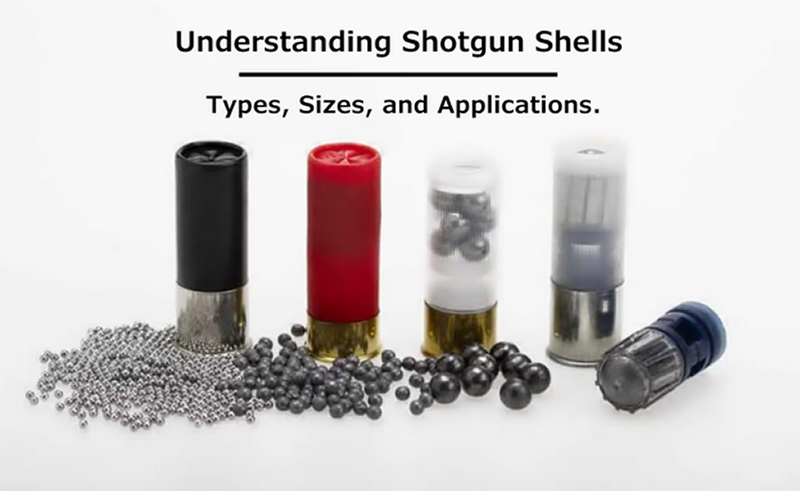
Shotguns have a long history of being loaded with various materials. While legends suggest that unconventional items like rocks, broken glass, and roofing nails were used as improvised loads in old black powder shotguns, modern shotgun ammo provides more reliable and standardized options.
Here are some types of shotgun shells:
- Shotshells: Loaded with multiple pellets
- Slugs: A shotgun bullet or one big solid projectile
- Buckshot: A round that penetrates deep, hits hard, and hits with multiple projectiles per trigger pull.
- Birdshot: A shotshell with a plastic outer hull filled with tiny metal pellets.
- Gauge: 10, 12, 16, 20, 28, and .410 are common gauges.
- Buckshot sizes: #4 Buck, #3 Buck, #2 Buck, #1 Buck, #0 Buck, #00 Buck, and #000 Buck.
- Shell size: The most common size of shell for 12-gauge ammo is 2 ¾-inch, but other sizes exist as well.
It's important to note that many types of shotgun ammo can serve multiple purposes, highlighting the shotgun's adaptability. However, the performance and effectiveness of the ammunition are also influenced by the shotgun choke, which determines the pattern or spread of the shot at a given distance. If you want to delve deeper into the Shotgun Shot Size, I recommend reading an article titled "Shotgun Shot Size Chart."
In the subsequent sections, I'll discuss the three main applications of shotgun ammo: target shooting, hunting, and self-defense. This will help you understand the specific characteristics and considerations for each type of ammunition.
Types of Shotgun Shells
There are two main types of modern shotgun shells: shotshells and slugs. Shotshells are loaded with multiple pellets, while slugs consist of a single solid projectile resembling a shotgun bullet. Both types of ammunition are centerfire, indicated by the round metal primer at the bottom of the shotgun cartridge. When the firing pin strikes the primer, the pressure ignites the powder, propelling the projectiles out of the barrel.
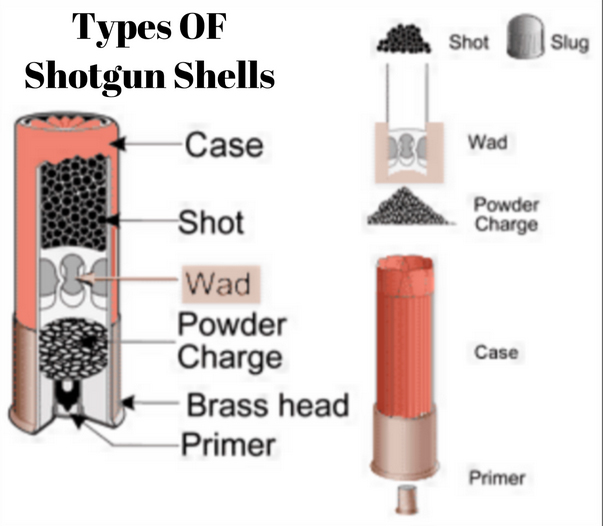
Shotgun barrels can be classified as rifled or smoothbore. Rifled barrels feature spiraling grooves inside, which impart spin to a bullet for increased accuracy. However, shotguns are smooth bore firearms, lacking any rifling. The absence of rifling allows the shot to exit the barrel as a tight, cohesive group of pellets that gradually spread out as they travel forward. Firing shot through a rifled barrel causes the pellets to disperse quickly in a spiral pattern, dissipating energy and compromising shot grouping. It is generally not recommended to use a shot through a rifled barrel frequently as it can damage the rifling.
On the other hand, shotgun slugs possess rifling directly on the projectile rather than inside the smoothbore barrel. This unique design allows the slug to spin like a bullet fired from a rifle or handgun, enabling accuracy even through a smoothbore barrel.
Additionally, specific rifled shotgun barrels, often called "slug guns," are designed exclusively for sabot slugs rather than shot or rifled slugs. Sabot slugs resemble the smooth bullets used in rifles and handguns. Slug guns typically feature sights similar to rifles and can often accommodate scopes. They are primarily used for hunting big game at up to approximately 75 yards. Many firearm owners purchase interchangeable rifled shotgun barrels for their existing shotguns instead of investing in an entirely new slug gun. This approach offers cost savings, and the rifled barrel can be easily swapped out for a smoothbore barrel when desired.
Shotgun Shell Sizes
Understanding shotgun shell sizes involves three key factors: gauge, length, and shot size.
Gauge refers to the size of the shotgun shell in terms of its diameter or circumference. Interestingly, larger gauge numbers indicate smaller shell diameters. The most common shotgun gauges, in descending order of size, are:
- 10 gauge
- 12 gauge (most prevalent)
- 20 gauge (second most prevalent)
- 16 gauge
- 28 gauge
- .410 bore (referred to as a "4-10" due to its bore measurement)
Length denotes the physical length of the shotgun round. The three most common lengths are 2-¾, 3-inch, and 3-½ inches. The shell length determines the number of rounds that can be loaded into the tube magazine of repeating shotguns. Shorter shells allow for higher magazine capacity and generally have less recoil, making them preferable for recoil-sensitive or smaller shooters.
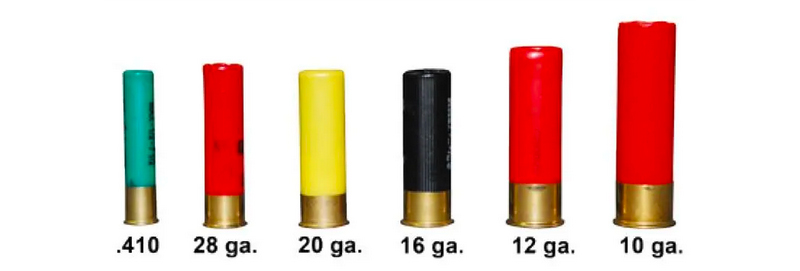
It's important to note that not all shotguns can accommodate any shell length. Manufacturer's specifications should be checked to ensure compatibility and avoid potential firearm damage or malfunctions. Semi-automatic shotguns, in particular, may have limitations on cycling certain shell lengths due to insufficient power to cycle the action effectively. Consulting the owner's manual or manufacturer's website can provide specific information for your shotgun model.
Shot size refers to the size of the pellets in the shotgun shell, as defined by the American Standard system. The numbering system follows a reverse logic, with larger numbers indicating smaller pellets. Shot sizes are typically referenced as "number ___," such as "#7-½." The smaller the pellets, the greater the number of pellets in each round.
Shot weight refers to the overall weight of the pellets loaded in the cartridge. Heavier shot loads generate more recoil. It's recommended to select shot sizes that offer sufficient effectiveness for the intended purpose while considering personal recoil tolerance. Shotguns can vary greatly in terms of how different individuals perceive recoil.
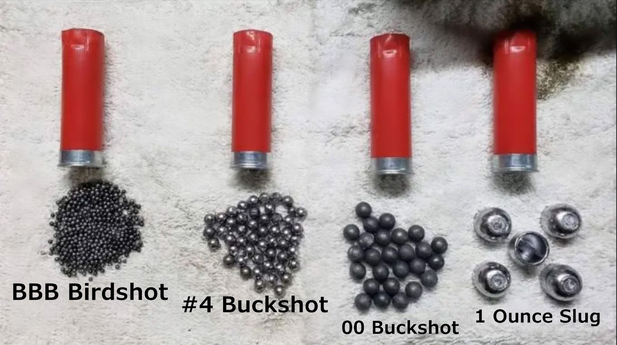
You can effectively communicate your desired shotgun shell specifications by combining gauge, length, and shot size. For example, a common birdshot shell might be described as "12 gauge, 2-¾ inch, #7." A suitable pheasant load could be "20 gauge, 3-inch, #5." A .410 bore, 2-½ inch shell with #0 buckshot could be appropriate for short-range home defense. The order in which these specifications are mentioned may vary, but the ammo industry understands the intended shell configuration as long as the relevant details are provided.
As a general guideline for hunting, smaller shot sizes are typically used for smaller targets. The shot size terminology may include additional letters when dealing with buckshot or waterfowl loads. For instance, "BB" or "T" shot sizes are mainly intended for waterfowl hunting. In these cases, more letters in the shot size indicate larger pellet sizes. For example, "BB" is smaller than "B," and "000" is larger than "00." Referencing the American Standard shot size charts provided for lead shot, buckshot, and steel/non-toxic birdshot can offer further clarity.
Understanding shotgun shell sizes, we can now explore their three primary applications: target shooting, hunting, and self-defense.
Let's delve into the three primary applications of shotgun shells: target shooting, hunting, and defense.
Target Shooting
Shotgun target shooting commonly involves clay targets, such as those used in Trap, Skeet, and Sporting Clays. These shooting sports can enhance accuracy for hunting and are enjoyed both casually and in professional competitions. Various gauges can be utilized based on target distance, shooter size, and desired difficulty level. Target shotshells typically contain small lead birdshot sizes, ranging from larger to smaller pellets:
- #7
- #7.5
- #8
- #8.5
- #9
- #10
Hunting Shells:
When it comes to hunting, it's crucial to consult the regulations set by local Fish and Game authorities, as they provide specific guidelines regarding the types of shotgun ammunition allowed for different animals and regions. Additionally, federal law mandates using lead-free, non-toxic shots for waterfowl hunting.
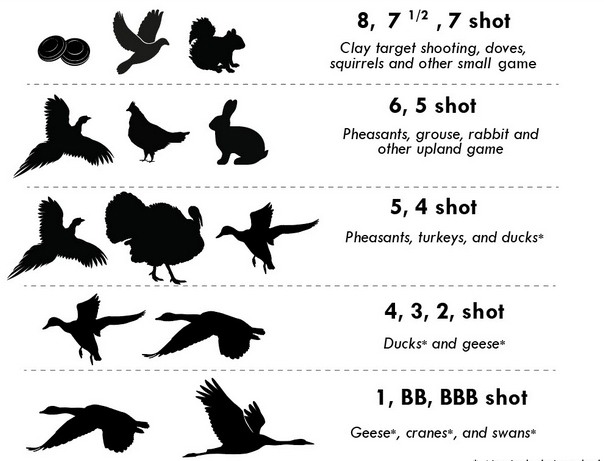
Let's explore the different shotgun shells commonly used for hunting, focusing solely on shot size and a range of gauges. Remember that gauge preferences can vary, and successful hunting experiences have been achieved with shotguns of various sizes when paired with appropriate ammunition. Shell length is not mentioned here, as the shotgun and the shooter determine it.
Pest Control (e.g., rats, snakes):
- Rimfire shot size: #12 (limited range)
- Handgun shot sizes: #12 to #4 (limited range)
- Shotgun shot sizes: #10 up to #8
- Gauge: .410 bore
Small Game (e.g., doves, pigeons, rabbits, squirrels, quail):
- Shot sizes: #7.5 up to #5
- Gauges: All 12 gauge and smaller
Upland Game Birds (e.g., grouse, pheasant, partridges, ptarmigan):
- Shot sizes: #7.5 up to #4
- Gauges: All 12 gauge and smaller
Waterfowl (non-toxic ammunition required):
- Shot sizes: #6 to #1, B to BBB, T to TT, F to FF
- Gauges: 10 gauge to 20 gauge
Turkey (often used with a turkey choke):
- Shot sizes: #6 to #1, B to BBB, T, F, specialized Turkey models
- Gauges: 10 gauge to 20 gauge
Big Game & Mid-sized Game (buckshot):
- Shot sizes: #4 Buck to #1 Buck (note: "buck" differentiates from birdshot sizes), 0 to 000 (pronounced "aught" for double-aught buck)
- Gauges: 10 gauge to 20 gauge
Big Game & Mid-sized Game (slugs):
- Instead of shot sizes, measured by projectile weight
- Smoothbore (standard shotgun barrel): Rifled slugs
- Rifled barrel: Sabot slugs
- Gauges: 10 gauge to .410 bore
It's common for hunters targeting multiple species during a trip to select a "happy medium" load that isn't overly powerful for smaller animals or underpowered for larger games. For instance, use the #5 shot for doves, rabbits, pheasant, and grouse, while waterfowl hunters may opt for the #2 shots for ducks and geese. Ultimately, these choices depend on the hunter's comfort level and personal preferences.
It's worth mentioning that some hunters may carry a few slugs or buckshot shells as a backup when pursuing upland games during overlapping seasons, such as deer or black bear. This ensures preparedness for unexpected encounters while in the field.
Best Shotgun Round for Home Defense
Determining the best shotgun round for home defense is a topic of significant debate. While shotguns of all gauges can be suitable for close-range home defense scenarios, the choice of ammunition becomes crucial. It's important to note that rimfire and handgun rounds mentioned earlier for pest control are inappropriate for self-defense due to their lack of power and effectiveness.
Contrary to a common myth, aiming is still essential in a defensive shotgun situation. Simply shooting without aiming is unlikely to guarantee hitting the intended target, especially in close quarters.
When considering shotgun ammo for home defense, the ongoing debate revolves around buckshot versus birdshot, buckshot versus slugs, and even the use of birdshot for this purpose. Ultimately, the best choice depends on various factors specific to each individual. Considerations may include the presence of children or other individuals in the house who could be harmed if projectiles penetrate walls, as well as the type of housing structure (apartment, townhouse, duplex) with shared walls. There is no one-size-fits-all solution; personal circumstances play a significant role in determining the optimal choice.
Given the current fluctuations in ammunition availability, conducting extensive testing with different types of ammo at the range may not be feasible. If you have limited access to ammunition, the best shotgun rounds for home defense are the ones you currently possess.
Here are some pros and cons when selecting your ideal shotgun round for home defense:
| Type of Shotgun Shell | Pros | Cons |
| Birdshot | Unlikely to penetrate through walls. More pellets, more chance of hitting the target. At close range, pellets pattern tightly and act much like a slug. | More than about 10 feet away, the small pellets will disperse and become less likely to penetrate. Grazing an intruder may not have much effect. |
| Buckshot | Massive pellets that penetrate deeply at further ranges. Even grazing is going to affect an intruder negatively. Pellets stay more tightly patterned further out. | It will penetrate through walls, possibly injuring people in other rooms. Pass-through penetration is likely, hitting what's behind the intruder. |
| Slugs | Undeniable stopping power. Even a poorly placed shot will most likely injure and/or incapacitate an intruder severely. | Higher likelihood of missing. Pass-through penetration and passing through walls at high velocity is a very real possibility. |
An effective but often overlooked strategy for home-defense shotguns is loading the rounds in a sequence that offers increasing shot sizes if initial rounds fail to stop the threat. For example, the first two rounds could be birdshot, followed by buckshot, and the final round as a slug. Alternatively, each successive round could vary in shot size, starting with #7-½ birdshot, followed by #4 birdshot, small buckshot like #4 Buck, 00 buck, and concluding with a slug. This approach allows for considering the pros and cons of each type of round.
Shotguns are undeniably versatile firearms that can serve purposes ranging from target shooting to hunting small and large games and providing effective home defense. The key lies in selecting the appropriate shotgun ammo for the intended application. The advantage of shotguns is the ability to experiment with different loads to determine the best fit for individual needs. With this knowledge of shotgun ammunition basics, you are better equipped to make informed decisions based on your specific requirements. Whether you have a task or need a reliable firearm, a shotgun can often be the solution to get the job done.

